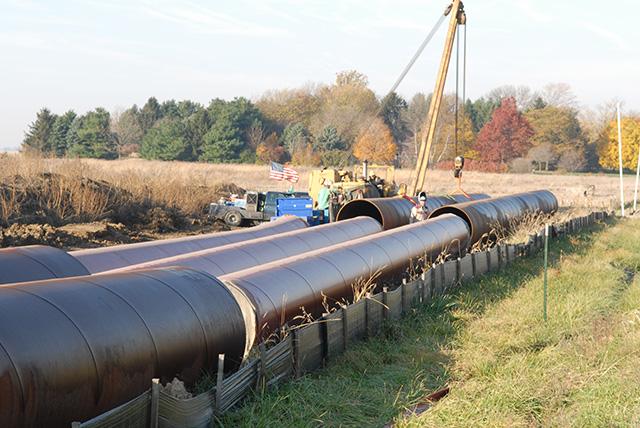Pipeline conversations are back at the forefront of news in the Midwestern United States. This discussion is different from Keystone XL and Dakota Access, though. Current debate surrounds proposed technology that would capture and store carbon-dioxide emissions from regional ethanol plants in deep underground caverns.
Sequester in this industry means to store carbon emissions. Carbon America has a plan in place to build a sequestration facility for an ethanol plant in Bridgeport, Nebraska and have it operational by 2024. This is the first commercial carbon and capture storage project of the kind to take place in Nebraska. The equipment is to capture the carbon-dioxide created during the ethanol production process and then transport it via pipeline to a nearby underground storage facility.
Nebraska is America’s #1 producer of corn-based fuel, according to an article published by Nebraska Examiner on March 5, 2022. The state also has almost no regulation on carbon-dioxide pipelines. So, this facility in Bridgeport is not the only carbon-dioxide pipeline in talks for the Cornhusker State.
The question of eminent domain is currently a popular topic of debate at the state level in Iowa and South Dakota, according to an article from Center for Rural Affairs published February 13, 2023. Legislators are determining to what extent private companies can use private land for their projects without prior approval from affected citizens.
In some cases, state governments are figuring out what percentage of affected citizens should be required to approve and what types of protections citizens should have against these types of abrupt life changing events. Note that people affected by eminent domain, and the related legal concept inverse condemnation, should be justly compensated for their losses whether they approve of the project or not.
Heartland Greenway lists three key reasons on their company website that explain why carbon capture and storage (CSS) is good for us all. First, the business claims that it helps reduce the carbon footprint of the industrial Midwest. Second, they refer to job creation. These projects would hypothetically create jobs in five states across the region. Lastly, Heartland Greenway advertises the positive environmental impact that reducing carbon-dioxide emissions would have. They seek to build a 1,300 mile long series of pipelines across Illinois, Iowa, Minnesota, Nebraska, and South Dakota.
Summit Carbon Solutions is working to secure parcels of land from homeowners in Iowa – the state with the largest stretch of their proposed 2,100 mile Midwest Carbon Express. This would be the world’s largest CSS project. Filings show that the company has procured less than 2% of the necessary support in Iowa, though they are not legally required to stay up to date on this paperwork.
The U.S. Department of Energy published a report on February 23 and 24 of last year regarding the repurposing of oil and natural gas pipelines for carbon-dioxide. Then in June, Biden’s administration took a environmentalist blow when the Supreme Court ruled that the Environmental Protection Agency cannot regulate greenhouse gas emissions.
The government and oil companies are highly interested in CSS. News agencies will report on the matter increasingly as the vested interest of the public increases. North Dakota’s biggest oil tycoon Harold Hamm committed $250 million to Summit. Oilers seek buy some of this carbon-dioxide to pump deep into aging oil fields, which helps extract oil in a process known as enhanced oil recovery, according to an article published by Grist on March 10, 2021.
This debate brings together two groups that might otherwise be at odds with each other – rural conservative landowners and liberal environmentalists, according to an article published by Reuters on October 25, 2022. Some dissenters do not want to move for personal reasons. Others don’t think that they are being compensated fairly. Environmentally conscious people wonder whether building an elaborate system of pipelines is prolonging the use of fossil fuels in place of developing alternative solutions. Protestors say that these pipelines are not in the public interest.
Regardless of where you stand on the issue, or what side you find yourself gravitating towards on the American political spectrum, you are sure to be hearing much more about carbon capture and storage in coming years.




